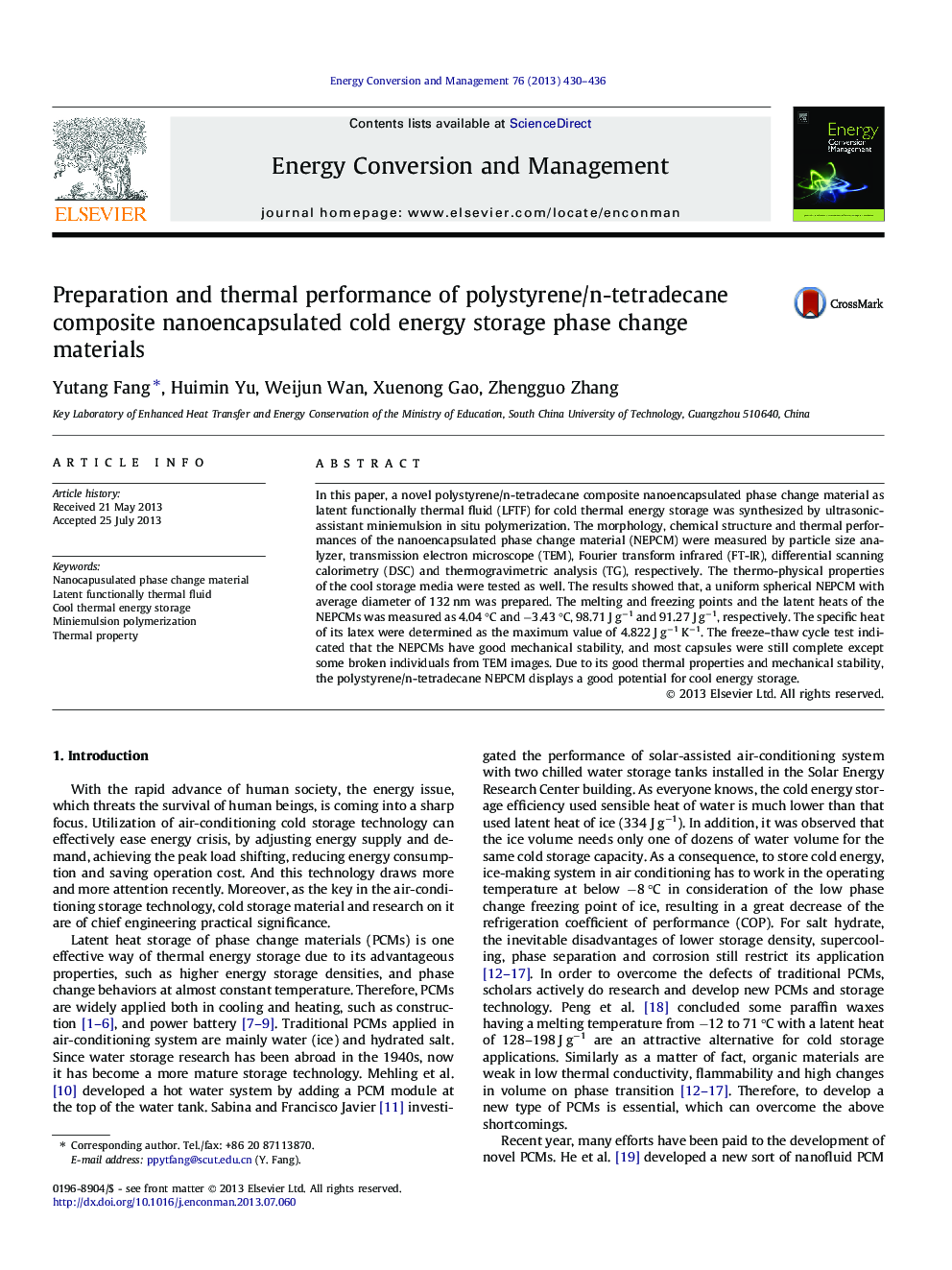| Article ID | Journal | Published Year | Pages | File Type |
|---|---|---|---|---|
| 760800 | Energy Conversion and Management | 2013 | 7 Pages |
•Average particle size of Tet/PS nanocapsules is smaller than the same type composite.•Latent heat of Tet/PS nanocapsules is as high as the same type composite.•Freeze–thaw cycle test and centrifugal sedimentation method are employed.•Tet/PS nanocapsules can be a candidate for cold thermal energy storage.
In this paper, a novel polystyrene/n-tetradecane composite nanoencapsulated phase change material as latent functionally thermal fluid (LFTF) for cold thermal energy storage was synthesized by ultrasonic-assistant miniemulsion in situ polymerization. The morphology, chemical structure and thermal performances of the nanoencapsulated phase change material (NEPCM) were measured by particle size analyzer, transmission electron microscope (TEM), Fourier transform infrared (FT-IR), differential scanning calorimetry (DSC) and thermogravimetric analysis (TG), respectively. The thermo-physical properties of the cool storage media were tested as well. The results showed that, a uniform spherical NEPCM with average diameter of 132 nm was prepared. The melting and freezing points and the latent heats of the NEPCMs was measured as 4.04 °C and −3.43 °C, 98.71 J g−1 and 91.27 J g−1, respectively. The specific heat of its latex were determined as the maximum value of 4.822 J g−1 K−1. The freeze–thaw cycle test indicated that the NEPCMs have good mechanical stability, and most capsules were still complete except some broken individuals from TEM images. Due to its good thermal properties and mechanical stability, the polystyrene/n-tetradecane NEPCM displays a good potential for cool energy storage.
